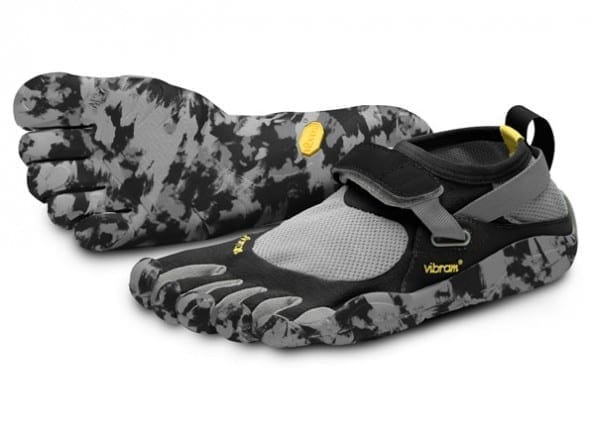If we are writing about a branch of the US military on this site, its usually the Army. Whether they are banning FiveFingers or endorsing them, they usually keep things interesting in the military space. However, the US Navy has taken notice of FiveFingers and published an article and a ‘letter to the editor’ in their recent edition of the NavyTimes. We’ve embedded them below for your perusal.


Wouldn't these look good as part of the standard issue uniform?
A reader says wearing “toe shoes” while working out has helped with his health, including preventing shin splints and a rolled ankle.
ON ‘MINIMALIST FOOTWEAR’
I’ve been reading articles back and forth about the “five-finger” shoes for physical training. It doesn’t really make sense [to make it so] we can’t wear them [“’Toe shoes’ approved,” Frontlines, Aug. 22].
As far as the “toe shoes” causing injuries: If you use them right, they actually help. They were made to work with your body’s natural stride. If you want to wear them on formation runs or anything else where you have to match your pace and stride to those around you, then they are going to cause problems, but the same can be said for regular shoes.
If you try to go from normal shoes to these things and run three miles, it’s going to cause problems the next day. You have to slowly transition into them, but the instructions that come in the box say that — you can’t blame the shoes for that one.
These shoes have helped me a lot. I used to get bad shinsplints; I don’t when I’m wearing these. I am prone to rolling my ankle, but I haven’t rolled it while running since I started wearing these. Why? Without the over-engineered support provided by most of the running shoes, all those extra muscles in your legs that your body forgot how to use have to do some work, and they get stronger.
How many joint and muscle problems did you have when you were running? If you have not tried this yet and experienced pain before, then maybe there is something to this minimalist footwear thing after all.
We should have the option [to wear] whatever footwear works for us. Everyone has different shapes and sizes of feet. Some have high arches, some flat. Some over-pronate, some don’t. Not everyone runs the same way. We should be able to wear what is comfortable and reduces fatigue and injury, etc.
CTN2 James Skupin
Norfolk, Va.
‘Toe shoes’ approved
New rule at odds with Navy medical officials
Despite concerns from its own medical professionals, the Navy has decided to reverse a policy that prohibits Vibram FiveFingers shoes and other minimalist athletic footwear in certain situations.
In a fleetwide message released Aug. 5, the Navy expressly allows the shoes, which are designed with little to no support or cushioning in an attempt to mimic the sensations of barefoot running. Devotees of the shoes say they reduce the likelihood of injuries, but the sports medicine community has mixed feelings about the footwear.
The policy specifically allows the wearing of “shoes that allow the foot to function naturally without providing additional support or cushioning” with the physical training uniform. They may be worn during command and individual physical training as well as the physical readiness test.
It Works For Me
Vibrams are popular with special warfare operators and are a common sight during their training sessions.
Master Chief Petty Officer of the Navy (SW/AW) Rick West is also an aficionado, but acknowledged that the shoes aren’t for everybody. “I do still run with them, and it works for me,” he said.
The Navy Bureau of Medicine and Surgery has concerns about the bare-bones shoes and has warned against their use.
“With musculoskeletal injuries as the No. 1 deployment limiting condition among military personnel, Navy leadership must take responsibility for the safety and well-being of our personnel during unit physical training. While intended for running, barefoot-style running mechanics have not been determined to be safe or effective for all runners,” BUMED spokeswoman Shoshona Pilip-Florea said.
“Encouraging the appropriate footwear for an activity is the first line of defense against sports-related injuries. Therefore, given the current evidence, Navy Medicine cannot recommend the use of minimalist footwear in command directed physical training activities.”
Recently, the Navy and Marine Corps Public Health Center and the Center for Personal and Professional Development reviewed medical literature on minimalist shoes and found insufficient evidence to prove or disprove that the shoes are effective or safe. The review also determined that the shoes strengthen arches, reduce pronation — where either the inner or outer edge of the foot strikes the ground first — and encourage softer landings.
